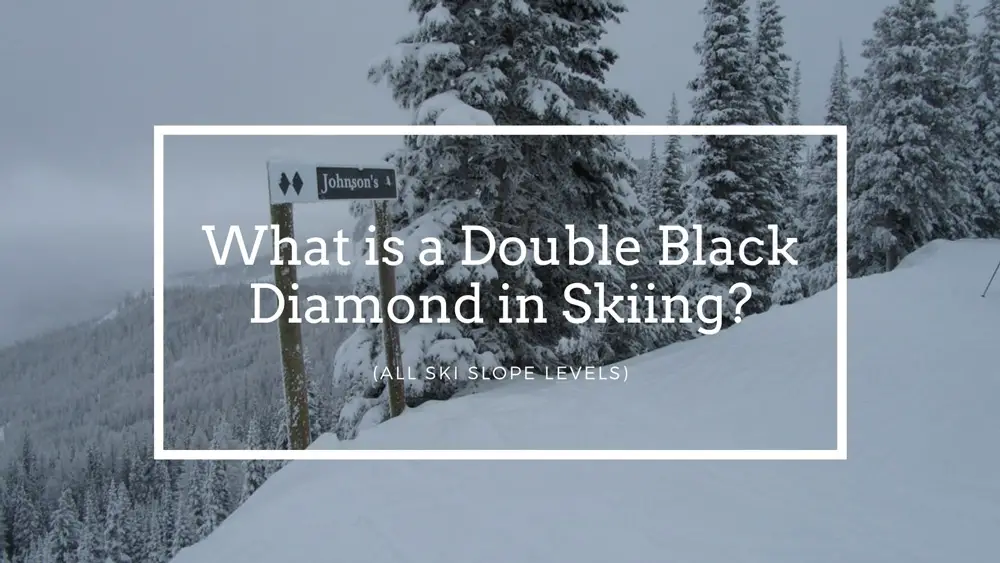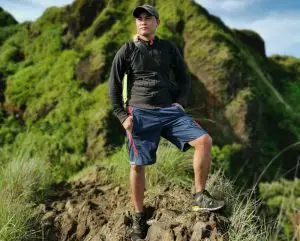Before language and writing were invented, symbols were our primary method of communication. This method is still used in several circumstances – like ski ratings.
Like any sport or activity that requires a certain skill level, skiing also has varying difficulty levels based on the terrain you are on. The most common symbol you will come across is the green circle. However, have you ever wondered what the double black diamond symbols mean?
We have broken it down for you in this informative guide and also included a short FAQ section. So, without further ado, let’s break down the meanings of the various colored symbols you will commonly find at a ski resort.
What Is A Double Black Diamond In Skiing?
Don’t be intimidated if you’re out with your snowboard and come across a double black diamond symbol. This symbol represents the difficulty level of terrain. The double black diamond symbol represents the most challenging and steep hill terrain meant exclusively for expert skiers.
This kind of terrain requires a high skill level, as skiers will typically face vertical drops, narrow passages between rocks and trees, and winding paths that can be quite challenging to navigate. These terrains are extremely unpredictable and must not be attempted by beginners under any circumstances.
Moreover, even expert skiers should proceed with caution, as double black diamond-marked terrains can be highly tricky to work with.
A minor miscalculation or misstep could lead the skier to go tumbling down the hill, which is something nobody would want. So, if you are just starting to explore the world of skiing and you come across the double black diamond symbol, it is best to steer clear of it.
Ski Slope Levels
Green Circle
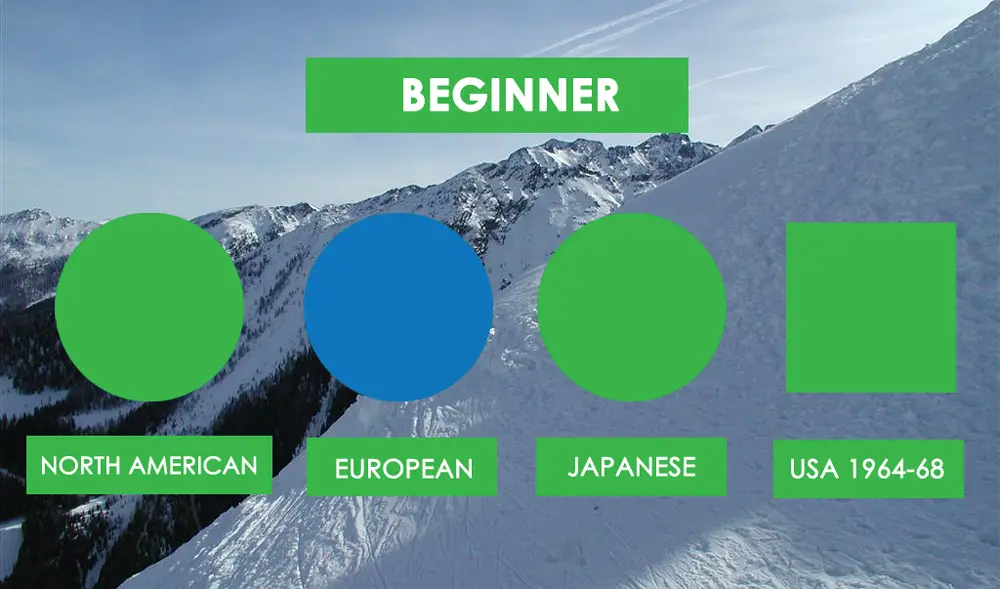
The green circle represents the easiest level of skiing. This is designed for beginners to explore and understand the mechanics of skiing better till they are ready to move on to the next levels.
The terrains marked with a green circle typically have a run of less than 25%. These terrains have wide paths and are regularly groomed and maintained to keep them clear for beginner skiers. This level also helps skiers understand the mechanics of loading and unloading from a chairlift.
Not just that, this is the perfect area for beginners to practice stopping, turning, and linking heel-to-toe turns.
Blue Square
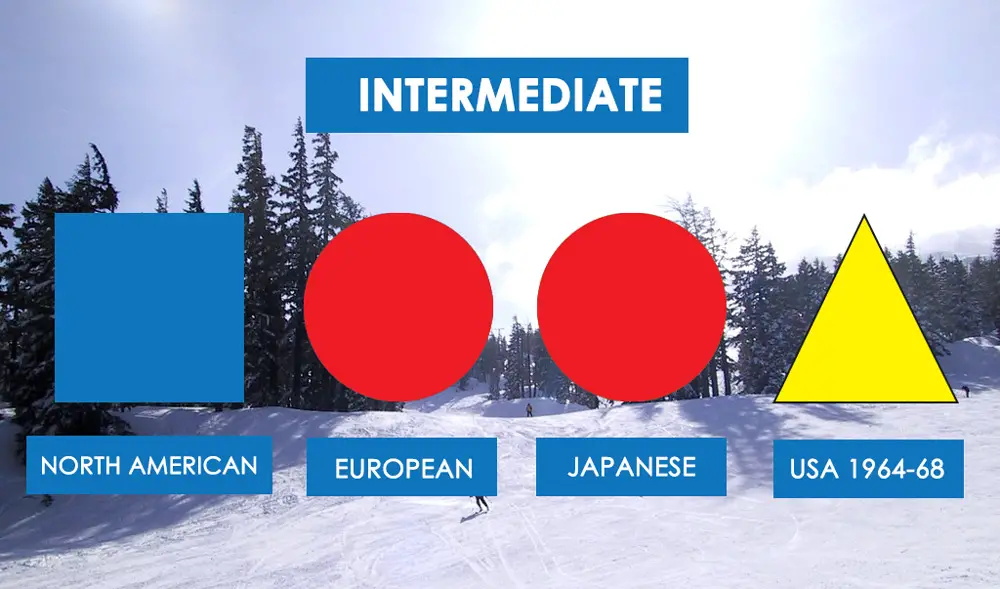
The blue square symbols signify the next level after beginner – intermediate. Typically, these terrains have a gradient that ranges between 25-40%.
However, these runs are generally the most common ones used by skiers and are thus prone to heavy traffic. Moreover, these runs are kept well-groomed in most cases, but it is not uncommon to come across ungroomed runs as well.
Blue square terrains are excellent practice spots for beginners who want to master their technique and move on to more challenging terrains.
Black Diamond
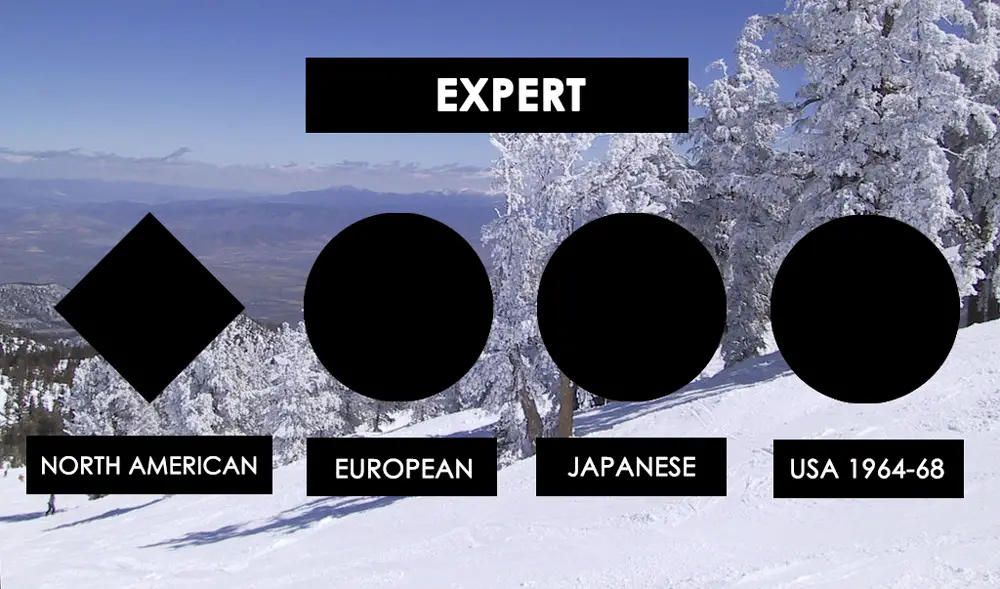
Moving up a step, you have the black diamond runs. These runs are slightly more challenging than blue squares and are typically used by advanced skiers who want to practice their moves.
Furthermore, these runs can be found in both groomed and ungroomed states but generally feature several obstacles like trees, winding paths, and rocks, which skiers must navigate through.
Black diamond runs will generally have a gradient of 40%. However, it could also be higher, depending on which ski resort you visit. It is imperative that you prepare yourself for black diamond runs, as these can be quite difficult to tackle.
Double-Black Diamond
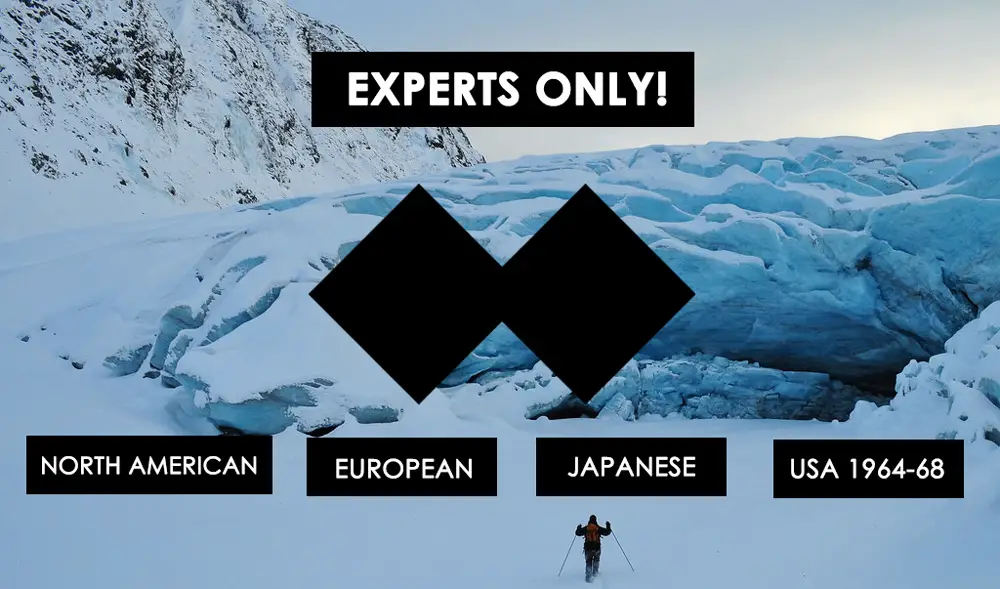
The double black diamond run features the highest gradient and slope level. These runs are the most challenging ones and must only be attempted by skilled and professional skiers. They feature a range of obstacles that can be extremely tricky to navigate without proper skill and experience.
These runs can have steep slopes, vertical drops, cornices, sharp turns and corners, trees, rocks, and several other obstacles. Moreover, low-visibility and extremely high winds make this run all the more challenging to navigate.
FAQs:
How Do I Know If I’m Ready To Move Up To The Double Black Diamond Level?
You must never attempt the double black diamond level until and unless you are entirely comfortable with the previous levels mentioned above. Moreover, it is best to have an expert to guide you, especially if it is the first time you will be attempting this run.
How Steep Is A Double Black Diamond?
Double black diamond runs can be heart-stoppingly steep and quite challenging to ski through. Typically, the first drop-off begins with a vertical fall of 10 to 30 feet, after which you have to ski through slopes that have a gradient of 40 to 60 degrees.
How Long Does It Take To Ski A Double Black Diamond?
If you are adventurous enough, you can attempt a double black diamond level run after just a couple of weeks of practice. However, it is recommended to take your time and practice thoroughly before attempting this highly challenging run.
What Is Harder Than Double Black Diamond?
As the name suggests, Double-Black Extreme Terrain is exponentially more challenging than the double black diamond slope. This terrain is symbolized with two black diamonds with the letters “E” and “X” in them, respectively.
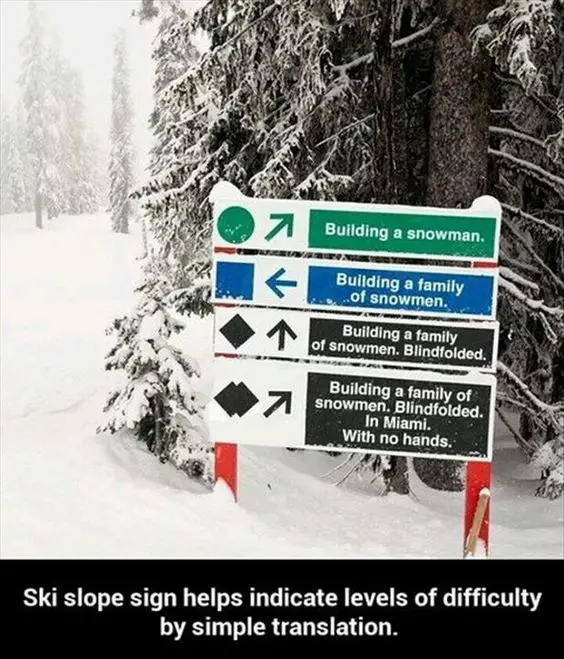
Final Thoughts
So, now that you are up to speed with the varying difficulty levels of ski slopes, are you ready to attempt skiing?
We recommend taking the help of a professional and getting proper training before attempting any slope. Furthermore, ensure that you are comfortable at each level and can navigate it independently without help before moving onto the next difficulty level.
We are sure that you will be able to attempt the double black diamond level in no time! Just remember to be safe and take as much help as you get. And with that, we have reached the end of our guide.
Until next time!

